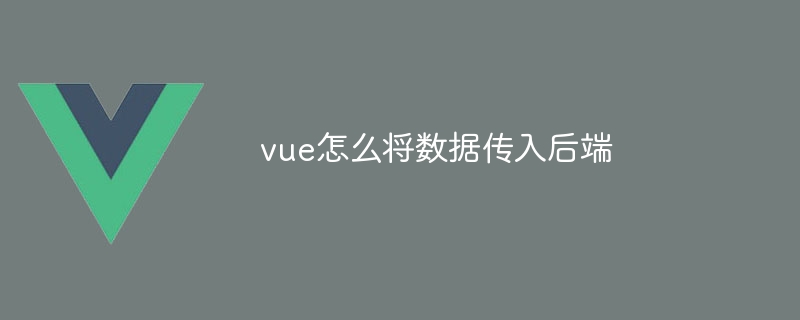在 Vue.js 中,将数据传入后端有三种方法:使用 axios 库发送 POST、PUT 或 PATCH 请求。使用 Fetch API 发送带有 JSON 正文的请求。使用表单及 FormData 对象提交数据。

如何将数据传入 Vue 后端
在 Vue.js 中,将数据传入后端有几种方法:
1. axios
axios 是 Vue.js 中常用的 HTTP 客户端库。它提供了以下方法来发送带有数据的请求:
立即学习“前端免费学习笔记(深入)”;
axios.post(url, data):向后端发送一个 POST 请求,其中 data 是要发送的数据对象。axios.put(url, data):向后端发送一个 PUT 请求,其中 data 是要发送的数据对象。axios.patch(url, data):向后端发送一个 PATCH 请求,其中 data 是要发送的部分数据更新。示例:
<code class="js">import axios from 'axios';
const data = { name: 'John Doe', age: 30 };
// 发送 POST 请求
axios.post('/api/users', data)
.then((response) => {
console.log(response);
})
.catch((error) => {
console.log(error);
});</code>2. Fetch API
Fetch API 是浏览器中的原生 API,它提供了发送 HTTP 请求的方法。它使用以下语法:
<code class="js">fetch(url, {
method: 'POST', // 或 'PUT' 或 'PATCH'
body: JSON.stringify(data), // 将数据转换为 JSON 字符串
headers: {
'Content-Type': 'application/json' // 指定请求正文的类型
}
});</code>示例:
<code class="js">const data = { name: 'John Doe', age: 30 };
fetch('/api/users', {
method: 'POST',
body: JSON.stringify(data),
headers: {
'Content-Type': 'application/json'
}
})
.then((response) => {
return response.json(); // 将响应转换为 JSON 对象
})
.then((data) => {
console.log(data);
})
.catch((error) => {
console.log(error);
});</code>3. 使用表单
如果要使用 HTML 表单提交数据,可以使用 formdata 对象:
<code class="js">const form = document.getElementById('myForm');
const formData = new FormData(form);
// 发送 POST 请求
axios.post('/api/users', formData)
.then((response) => {
console.log(response);
})
.catch((error) => {
console.log(error);
});</code>以上就是vue怎么将数据传入后端的详细内容,更多请关注php中文网其它相关文章!

每个人都需要一台速度更快、更稳定的 PC。随着时间的推移,垃圾文件、旧注册表数据和不必要的后台进程会占用资源并降低性能。幸运的是,许多工具可以让 Windows 保持平稳运行。




Copyright 2014-2025 https://www.php.cn/ All Rights Reserved | php.cn | 湘ICP备2023035733号